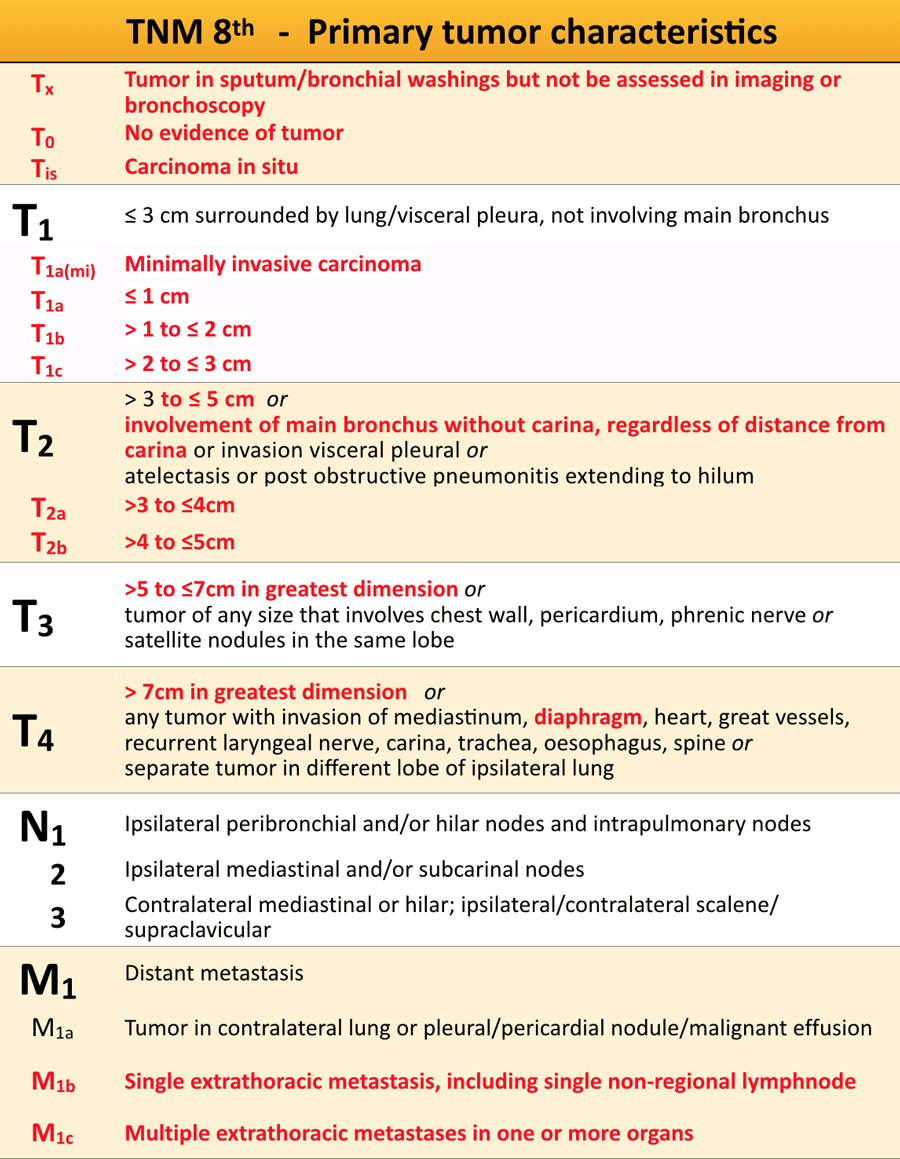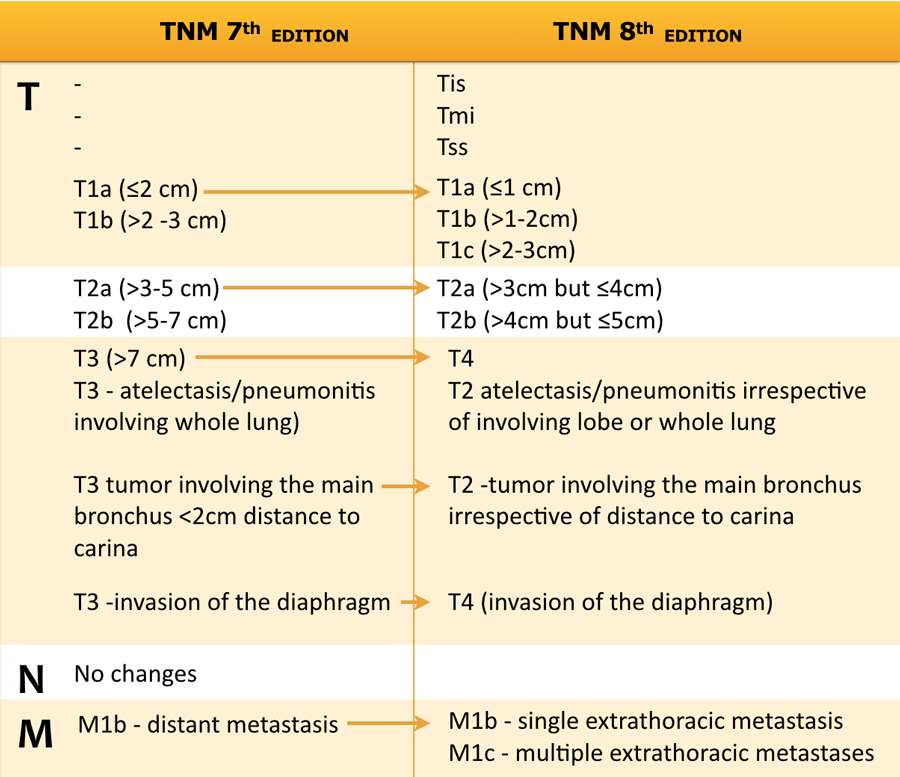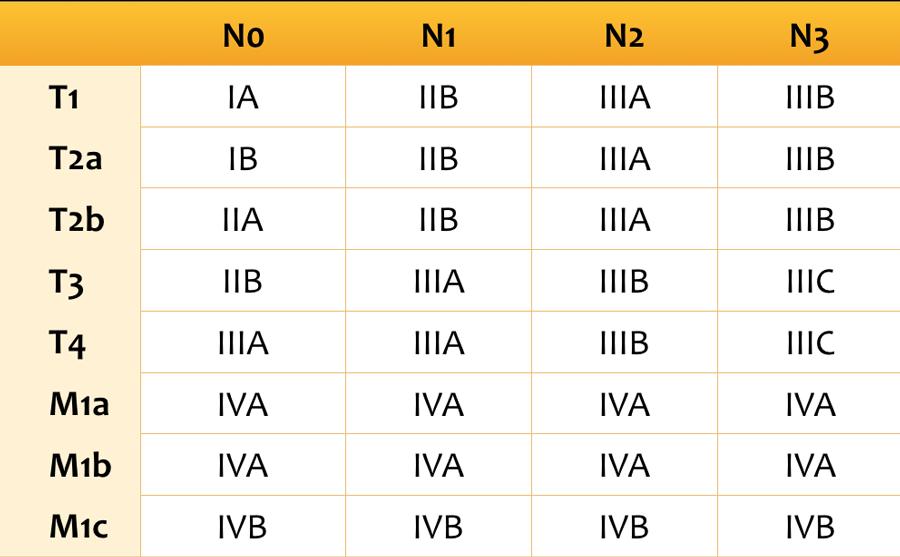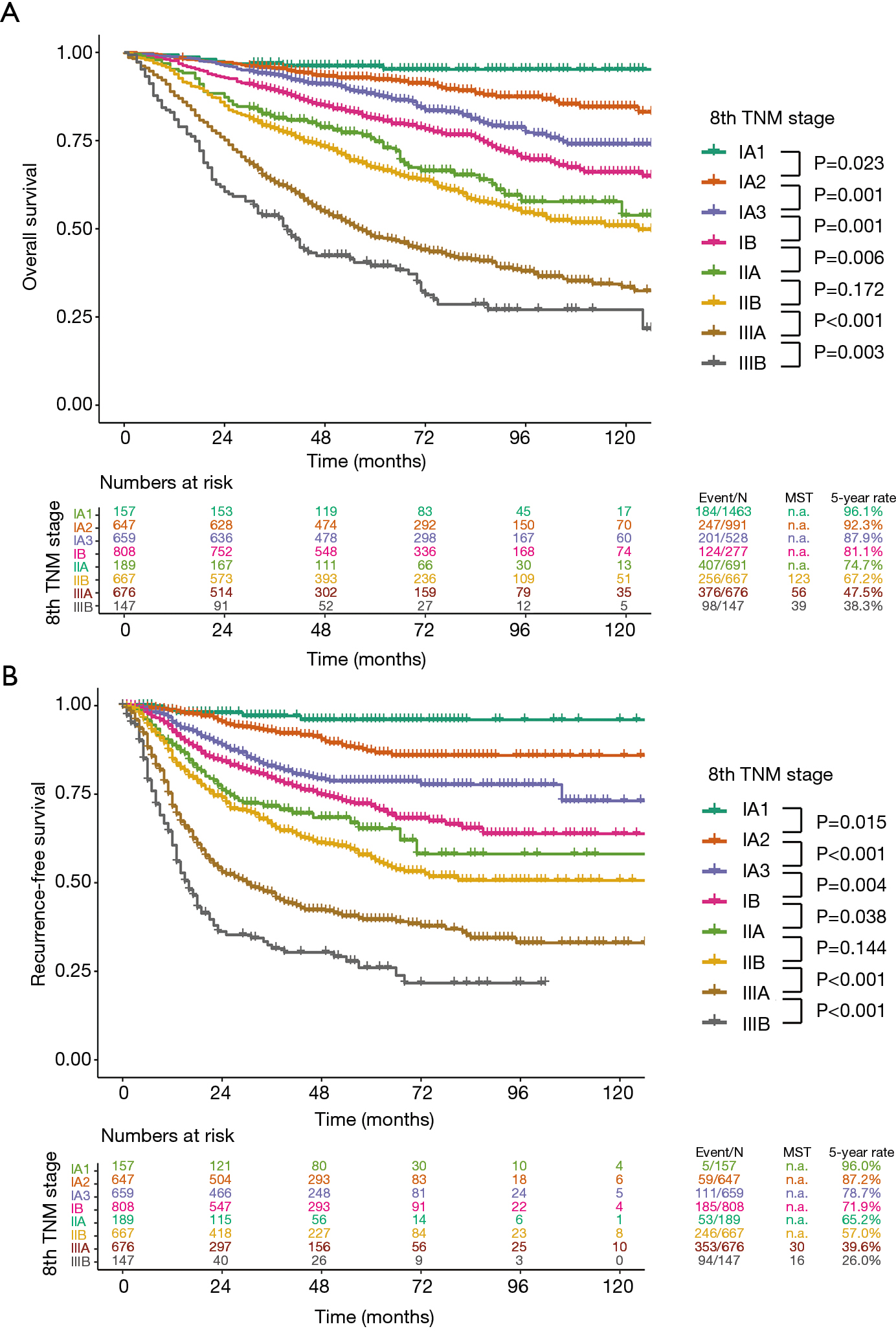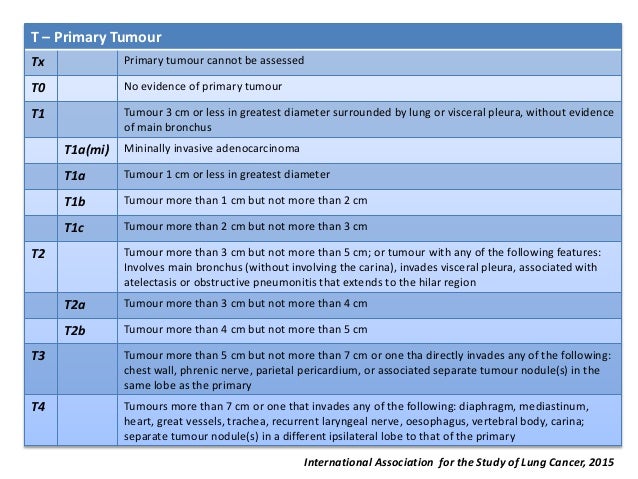Lung Cancer Staging 8th Edition Chest
This is a summary of the 8th edition of tnm in lung cancer which is the standard of non small cell lung cancer staging since january 1st 2017.
Lung cancer staging 8th edition chest. Since its introduction in the 1970s the tnm staging has undergone significant. This paper summarizes the eighth edition of lung cancer stage classification which is the worldwide standard as of january 1 2017. Guidelines are constantly being reviewed as more data becomes available to provide the most accurate prognostic markers hence aiding in the clinical detection and staging of lung cancer. Clinical staging plays a crucial role in predicting survivor as well as influencing management option in lung cancer patients.
The latest update in 2017 introduced the 8th edition for lung cancer which provided several new categories especially in the t and m descriptors. As for the t descriptor t1 and t2 were subdivided into t1a t1b t1c t2a and t2b by size in 1 cm increments. Stage classification classification of tumor stage is a cornerstone of providing care for patients with cancer. See editorial commentary page 360.
Non small cell lung cancer. See editorial page 354. Ajcc 8th edition 2017 to be used for staging beginning jan 1 2018. It is issued by the iaslc international association for the study of lung cancer and replaces the tnm 7th edition.
Tx primary tumor cannot be assessed or tumor proven by malignant cells in sputum or bronchial washings but not visualized by imaging or bronchoscopy. The iaslc international association for the study of lung cancer 8 th edition lung cancer staging system was introduced in 2016 and supersedes the iaslc 7 th edition. A consistent language provides the ability to communicate about a specific patient and about cohorts of patients in clinical studies. This paper summarizes the eighth edition of lung cancer stage classification which is the worldwide standard as of january 1 2017.
Several editions of the tnm staging system for lung cancer have been published following its introduction in 1973. There are 2 or more separate tumor nodules in the same lobe of a lung. It is essential that clinicians be aware of the new 8th edition of the tnm classification of lung cancer. The fundamental purpose of stage classification is to provide a nomenclature about the anatomic extent of disease that is used consistently around the world.
The cancer has not spread to nearby lymph nodes n0 or distant parts of the body m0. This revision is based on a large global database a sophisticated analysis extensive internal validation as well as multiple assessments confirming generalizability. The cancer is no larger than 3 cm. Lung cancer stage groups.
Stage classification provides a nomenclature about the anatomic extent of a cancer. It has grown into the chest wall the inner lining of the chest wall parietal pleura the phrenic nerve or membranes of the sac surrounding the heart parietal pericardium. Practicing clinicians must be familiar with the stage classification system when managing contemporary patients with lung cancer. Central message consistent stageclassificationisa fundamental aspect of management of patients with cancer.
Tis carcinoma in situ.
